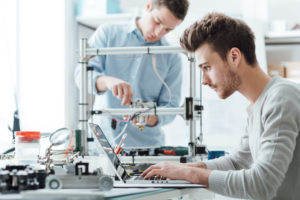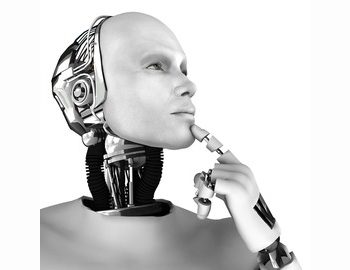
Product design is the basis for any new product development. The product design process encapsulates all the activities undertaken from ideation to commercialization of a product. During this process, there are several steps to be undertaken to ensure that the product is defect-free and ready for the market. While traditional methods of product development and testing involve physical means, virtual prototyping involves using engineering software in order to design and test the product in a risk-free, virtual environment prior to to the creation of a physical prototype. Leveraging simulation can be expensive, but specific companies, such as ANSYS, are offering virtual simulation solutions at a discounted cost to eligible startups and early stage companies through their ANSYS Startup Program.
In the past, physical prototypes were the most common way of developing and testing a product. Whenever a new product idea was conceived, the product teams got together to create several physical prototypes and analysed them. Testing was also conducted on each of these to evaluate which design was the best. Prototyping has always helped designers understand and identify product defects. Naturally, the larger the number of physical prototypes, the more time, resources, and money are required. Hence over the years, many smart businesses have adapted to create virtual prototypes of their products.
For startups specifically, virtual prototyping is even more critical. Most startups are time and budget bound, and with the ability to create and test countless virtual prototypes, they drastically reduce their Time-To-Market (TTM). When a product is in the market faster, it speeds up user and client feedback process for the products, which is crucial for developing fixes and even starting the process of creating next generation versions of the product.
Today, there are many engineering simulation design and virtual prototyping software tools available. ANSYS is one of the world leaders in engineering simulation considering that it is the company’s sole focus. The ANSYS suite covers all disciplines of physics used to simulate interactions: structural, fluid dynamics, vibration, heat transfer, and even electromagnetic fields. The ANSYS Startup Program aims at providing eligible startups with greatly discounted virtual prototyping software that drives innovation, improves quality, and reduces cost, enabling startups to build world class hardware products.
Product design process and where virtual prototyping fits in
Creating a new product that will succeed in today’s competitive markets involves a lot of steps. Launching any new product should start with a thorough understanding of why the product is being created and what is the problem it is solving. Read more about how engineering simulation software is useful for IoT and hardware startups. After the ideation stage where the product idea begins, these steps should be taken before a product hits the commercialization stage:
Stage 1 – Designing prototypes and execution
Based on the solution a product is offering, the product designers come up with a feature list that the product must have. Other important aspects are the user experience, the look and feel of the product, and the learning curve to master the use of the product. Based on these, several prototypes are designed. Many of them can be physical prototypes to get a general sense of the product. However, with the advances of engineering simulation, traditional methods are being replaced with virtual prototyping.
Compliance to uncompromising safety standards and hazard identification is imperative for any manufacturer, especially in industries such as automotive, aviation, or health-tech. By using simulation platforms, engineers can digitally run all major tests usually implemented on a physical prototype, eliminating risk.
Stage 2 – Analysis and testing of the prototypes
Once prototypes are built, they need to be tested and analysed to be sure they are defect-free. Performance, usability, and stress testing under different environments are easily achieved with the use of virtual prototyping software. The process is very quick and the software can analyse all aspects of failures and errors in the product. Many times, companies also opt for user and physical testing by using their own products, but both these processes are time consuming.
Stage 3 – Reiterations and final designs
Based on the results obtained in the above process, a final product is created. This can be done with the help of the virtual prototyping software. The startup also may create a process plan for the manufacturing if it is outsourced.
Stage 4 – Release
Initially, small batches of the products are released for the market. Then, based on feedback, manufacturing processes are optimized.
Stage 5 – Improvements and optimization
There could be some improvements needed on the product based on user feedback and market reviews. These improvements can be carried out and tested in the software itself before manufacturing a new version of the product. Additionally, innovative startups can start working on the next generation of their product using the software to add features and enhancements.
Planning a product is always complicated and involves multiple stages. Conceptualizing and planning also includes dedicating resources for each stage. Most hardware and IoT startups are constrained by budgets and resources. Using virtual prototyping software makes the whole process shorter and is instrumental in meeting budgets. Startups may find virtual prototyping software expensive, however the ANSYS Startup Program makes their software highly discounted and affordable to all qualifying startups through their program. It is a great opportunity for startups to create great products using virtual prototyping.
